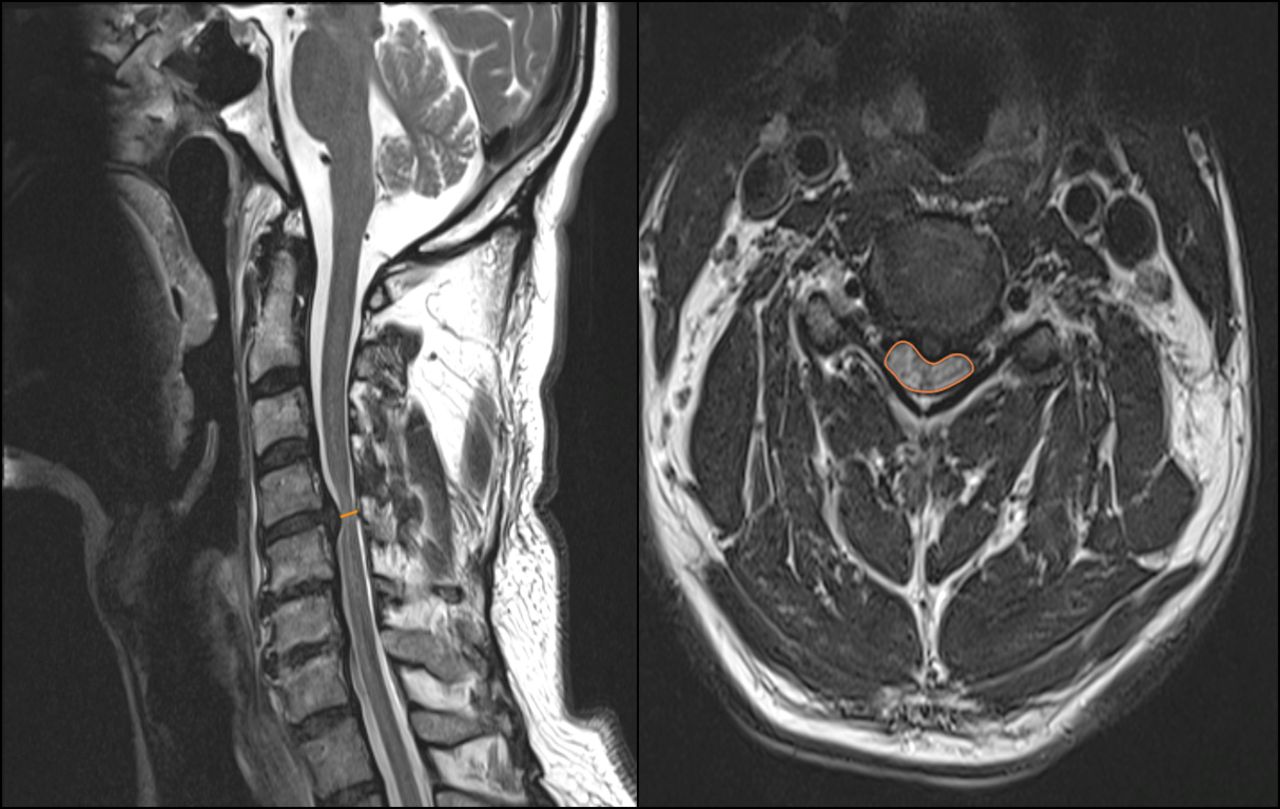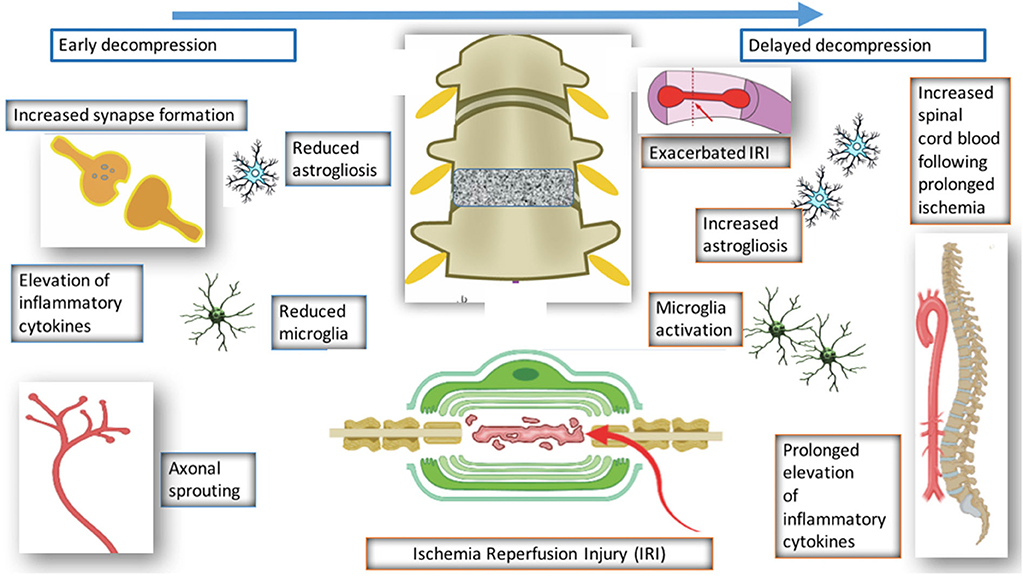Spinal cord compression, also known as myelopathy, is a condition that occurs when the spinal cord becomes compressed or squeezed. This can lead to a variety of symptoms and complications, depending on the severity and location of the compression. Spinal cord compression can result from various underlying causes, including injury, degenerative diseases, tumors, and infections. Early diagnosis and treatment are crucial to prevent permanent damage to the spinal cord. In this article, we will explore the causes, symptoms, and treatments for spinal cord compression in detail.

Understanding Spinal Cord Compression
The spinal cord is a vital part of the central nervous system, responsible for transmitting signals between the brain and the rest of the body. When the spinal cord is compressed, these signals may be disrupted, leading to a range of neurological symptoms. Compression can occur anywhere along the spine, including the neck, upper back, or lower back, and the specific symptoms depend on the affected area.
How Does Spinal Cord Compression Happen?
Compression of the spinal cord can occur due to several factors. These include structural changes in the spine, external forces, or abnormal growths. The most common mechanisms involve narrowing of the spinal canal, which houses the spinal cord, or direct pressure applied to the cord itself. Understanding how this happens requires a closer look at the anatomy of the spine and its surrounding structures.
Causes of Spinal Cord Compression
There are numerous potential causes of spinal cord compression. Some are related to age-related wear and tear, while others may result from trauma or underlying medical conditions. Below are some of the most common causes:
1. Degenerative Disc Disease
- Degenerative disc disease refers to the gradual breakdown of the discs that cushion the vertebrae in the spine. Over time, these discs lose their elasticity and height, leading to reduced space between the vertebrae. This can cause the bones to press against the spinal cord or nerves, resulting in compression.
2. Herniated Discs
- A herniated disc occurs when the soft inner material of a spinal disc protrudes through its tough outer layer. This can put pressure on the spinal cord or nearby nerves, causing pain, weakness, or numbness. Herniated discs are more common in the lower back and neck but can occur anywhere along the spine.
3. Spinal Stenosis
- Spinal stenosis refers to the narrowing of the spinal canal, which can compress the spinal cord. This condition is often caused by age-related changes, such as bone spurs, thickened ligaments, or bulging discs. It is most frequently seen in older adults and typically affects the neck or lower back.
4. Trauma or Injury
- Traumatic injuries, such as fractures or dislocations of the vertebrae, can directly damage the spinal cord or cause fragments of bone to press against it. Car accidents, falls, and sports injuries are common causes of traumatic spinal cord compression.
5. Tumors
- Tumors, whether benign or malignant, can grow within or near the spinal cord, leading to compression. These growths may originate in the spine or spread from other parts of the body, such as the lungs or breasts, in cases of cancer.
6. Infections and Inflammatory Conditions
- Infections, such as abscesses or osteomyelitis, can cause swelling and inflammation around the spinal cord. Similarly, inflammatory conditions like rheumatoid arthritis or ankylosing spondylitis can lead to structural changes in the spine that result in compression.
7. Congenital Abnormalities
- Some individuals are born with structural abnormalities in the spine, such as a narrow spinal canal or misaligned vertebrae. These conditions can predispose them to spinal cord compression later in life.
Symptoms of Spinal Cord Compression
The symptoms of spinal cord compression vary depending on the location and severity of the compression. They can range from mild discomfort to severe neurological deficits. Common symptoms include:
1. Pain
- Pain is one of the earliest and most common symptoms of spinal cord compression. It may be localized to the neck, back, or radiate to the arms or legs. The pain is often described as sharp, burning, or aching and may worsen with movement or certain positions.
2. Numbness and Tingling
- Individuals with spinal cord compression may experience numbness or tingling sensations in their extremities. These sensations are often described as “pins and needles” and may affect the hands, feet, arms, or legs.
3. Weakness
- Muscle weakness is another hallmark symptom of spinal cord compression. It may make it difficult to perform everyday tasks, such as lifting objects, walking, or gripping items. Weakness typically affects the areas of the body controlled by the compressed portion of the spinal cord.
4. Loss of Coordination
- Compression of the spinal cord can interfere with motor control, leading to problems with coordination and balance. Individuals may notice difficulty walking, frequent tripping, or clumsiness in their movements.
5. Bowel and Bladder Dysfunction
- In severe cases, spinal cord compression can affect the nerves that control bowel and bladder function. This may result in incontinence, difficulty urinating, or constipation. These symptoms require immediate medical attention, as they indicate significant nerve involvement.
6. Muscle Spasms
- Muscle spasms, or involuntary contractions, may occur as a result of nerve irritation caused by spinal cord compression. These spasms can be painful and disruptive to daily activities.
Diagnosing Spinal Cord Compression
Diagnosing spinal cord compression involves a combination of clinical evaluation, imaging studies, and sometimes additional tests. A thorough assessment is essential to determine the underlying cause and severity of the condition.
Clinical Evaluation
- A healthcare provider will begin by taking a detailed medical history and performing a physical examination. They will assess symptoms, check reflexes, and evaluate muscle strength and sensation. This helps identify the location and extent of the compression.
Imaging Studies
- Imaging studies play a critical role in diagnosing spinal cord compression. Magnetic resonance imaging is often the preferred method, as it provides detailed images of the spinal cord and surrounding structures. Computed tomography scans and X-rays may also be used to visualize bone abnormalities or fractures.
Additional Tests
- In some cases, additional tests such as electromyography or nerve conduction studies may be performed to assess nerve function. Blood tests may also be ordered to rule out infections or inflammatory conditions.
Treatments for Spinal Cord Compression
The treatment for spinal cord compression depends on the underlying cause, severity, and location of the compression. The primary goals of treatment are to relieve pressure on the spinal cord, manage symptoms, and prevent further damage. Treatment options range from conservative measures to surgical interventions.
1. Non-Surgical Treatments
- Medications: Nonsteroidal anti-inflammatory drugs may be prescribed to reduce pain and inflammation. In some cases, corticosteroid injections are used to alleviate swelling around the spinal cord.
- Physical Therapy: Physical therapy can help improve strength, flexibility, and posture, reducing strain on the spine. Therapists may also teach techniques to manage pain and prevent further injury.
- Bracing: Wearing a brace or collar can provide support and limit movement, allowing the spine to heal. This is particularly useful in cases of trauma or instability.
2. Surgical Treatments
- Decompression Surgery: Decompression surgery aims to relieve pressure on the spinal cord by removing bone spurs, herniated discs, or tumors. Common procedures include laminectomy and discectomy.
- Spinal Fusion: Spinal fusion involves joining two or more vertebrae together to stabilize the spine. This procedure is often performed after decompression surgery to prevent future instability.
- Tumor Removal: If a tumor is causing the compression, surgery may be necessary to remove it. Radiation therapy or chemotherapy may also be used to shrink or eliminate cancerous growths.
3. Lifestyle Modifications
- Weight Management: Maintaining a healthy weight can reduce stress on the spine and lower the risk of compression.
- Ergonomic Adjustments: Making ergonomic adjustments at work or home, such as using supportive chairs or adjusting computer screens, can help prevent strain on the spine.
- Exercise: Regular low-impact exercise, such as swimming or yoga, can strengthen the muscles supporting the spine and improve overall spinal health.
When to Seek Medical Attention
Spinal cord compression is a serious condition that requires prompt medical attention. Certain symptoms warrant immediate evaluation, as they may indicate significant nerve damage or impending complications. These include:
- Sudden onset of severe pain or weakness
- Loss of bladder or bowel control
- Difficulty walking or maintaining balance
- Numbness or tingling in multiple areas of the body
If any of these symptoms occur, individuals should seek emergency care to prevent permanent damage to the spinal cord.





